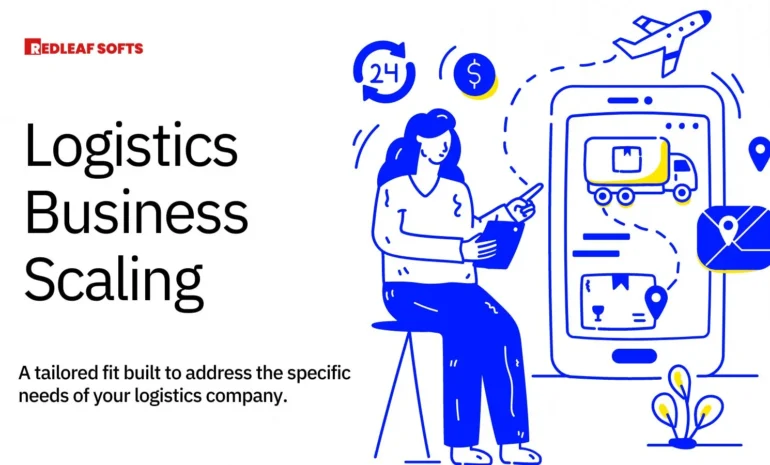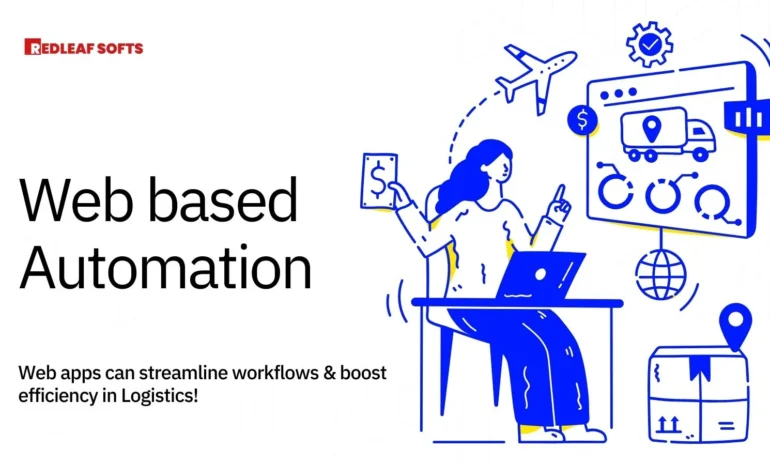Picture this: a bustling cityscape where the hum of online transactions reverberates, and the race against time intensifies. In the intricate dance between customer expectations and delivery logistics, the last mile emerges as the decisive battleground. How can businesses navigate this terrain, ensuring parcels reach doorsteps seamlessly and on time? The answer lies in a transformative force: mobile applications. In this exploration, we dive into the maze of challenges within the last mile of delivery and unveil the potential of mobile apps as a strategic solution, reshaping the very fabric of modern delivery operations.
1. The Anatomy of Last-Mile Delivery Challenges:
Last-mile delivery, the final and often most complex leg of the supply chain, is fraught with numerous challenges that businesses must navigate. Traffic congestion, unpredictable weather conditions, and the rising expectations for swift deliveries present formidable obstacles. Understanding these challenges is pivotal for developing effective solutions that address the unique complexities of the last mile.
Traffic Congestion:
One of the most pervasive challenges in last-mile delivery is navigating through urban congestion. Cities worldwide grapple with traffic snarls that can significantly impede delivery schedules. This section explores how traffic management and route optimization technologies can mitigate the impact of congestion, ensuring timely and efficient deliveries. By leveraging historical traffic data and real-time updates, businesses can make informed decisions to circumvent congested routes, minimizing delays and improving overall efficiency.
Unpredictable Weather Conditions:
Weather fluctuations add another layer of complexity to last-mile delivery. Rain, snow, or extreme temperatures can hinder delivery schedules and compromise the integrity of packages. In this part, we delve into the integration of weather forecasting data into mobile app solutions. By providing delivery personnel with real-time weather updates, businesses can proactively adjust routes, allocate appropriate resources, and implement measures to protect sensitive packages, thereby enhancing the reliability of last-mile deliveries.
Rising Expectations for Swift Deliveries:
Consumer expectations for faster deliveries, often driven by the rise of e-commerce giants, pose a significant challenge for businesses. Customers now demand same-day or even instant deliveries. This section explores how mobile apps, equipped with advanced tracking and route optimization capabilities, can help businesses meet these heightened expectations. By streamlining the entire delivery process, from order confirmation to package drop-off, businesses can enhance the speed and efficiency of their last-mile operations.
2. Real-Time Tracking and Visibility
Efficient last-mile delivery is contingent upon providing customers with real-time visibility into the delivery process. Customers today expect to track their packages in real-time, knowing the exact location and estimated time of arrival. This section focuses on how mobile apps, equipped with robust tracking functionalities, transform the last-mile delivery experience by offering unparalleled transparency.
Mobile apps leverage GPS technology to provide customers and businesses with accurate, real-time tracking information. Through intuitive interfaces, customers can track the journey of their packages from the warehouse to their doorstep. Businesses, in turn, gain comprehensive visibility into the entire delivery chain, enabling proactive decision-making and issue resolution. By ensuring transparency, mobile apps contribute to increased customer satisfaction and trust, key factors in the competitive landscape of modern e-commerce.
3. Route Optimization for Efficiency
Inefficient route planning is a major contributor to delays and increased operational costs in last-mile delivery. This section explores how mobile apps, equipped with advanced algorithms, optimize delivery routes in real time. Traditional route planning often falls short in adapting to dynamic variables such as traffic fluctuations, road closures, and delivery windows.
Mobile apps, powered by artificial intelligence and machine learning, continuously analyze data to optimize delivery routes. They factor in real-time traffic conditions, historical delivery data, and even weather forecasts to generate the most efficient routes for delivery personnel. This not only minimizes delays but also reduces fuel consumption and operational costs, contributing to a more sustainable and cost-effective last-mile delivery strategy.
4. Empowering the Workforce with Mobile Technology
The success of last-mile delivery hinges on the efficiency and productivity of the delivery workforce. This section explores how mobile apps empower delivery personnel with tools for route navigation, communication, and order updates.
Mobile apps act as a comprehensive solution for delivery personnel, providing them with real-time route guidance through GPS navigation. This not only improves delivery accuracy but also helps in adapting to unexpected changes on the go. Additionally, mobile apps facilitate seamless communication between the delivery team and the central operations hub. Instant updates on order status, changes in delivery schedules, and customer instructions can be relayed in real-time, fostering a more responsive and agile delivery workforce.
5. Contactless Deliveries and Safety Measures
The global pandemic has reshaped consumer behavior, emphasizing the need for contactless deliveries and stringent safety measures. This section explores how mobile apps play a pivotal role in implementing contactless delivery options and ensuring the safety of both customers and delivery personnel.
Mobile apps enable businesses to offer contactless delivery options, allowing customers to receive their packages without direct physical contact. This is achieved through features such as digital signatures, photo confirmations, and secure drop-off locations. Moreover, mobile apps can facilitate communication between customers and delivery personnel, ensuring adherence to safety protocols and providing real-time updates on safety measures implemented during the delivery process.
6. Customer Engagement and Feedback Loops
The last-mile delivery experience extends beyond the physical act of delivering a package; it encompasses customer engagement and feedback. This section delves into how mobile apps serve as a platform for seamless customer engagement, including order updates, delivery confirmations, and feedback collection.
Mobile apps enable businesses to keep customers informed throughout the entire delivery journey. Automated notifications regarding order confirmation, estimated delivery times, and delivery completion enhance the overall customer experience. Furthermore, mobile apps facilitate the collection of valuable feedback through easy-to-use interfaces, allowing businesses to gather insights into customer satisfaction, identify areas for improvement, and continuously enhance their last-mile delivery services.
Conclusion
In conclusion, a mobile app approach to tackling last-mile delivery challenges offers a comprehensive and innovative solution. From addressing the intricacies of traffic congestion and unpredictable weather conditions to providing real-time tracking, route optimization, and contactless delivery options, mobile apps empower businesses to navigate the complexities of the last mile with agility and efficiency. As the logistics landscape continues to evolve, embracing mobile technology is not just a competitive advantage; it is a strategic imperative for businesses seeking to provide seamless, transparent, and customer-centric last-mile delivery services.
At RedLeaf Softs we offer you complete guidance about digitalizing your business from top to bottom and ensure a smooth progress.


